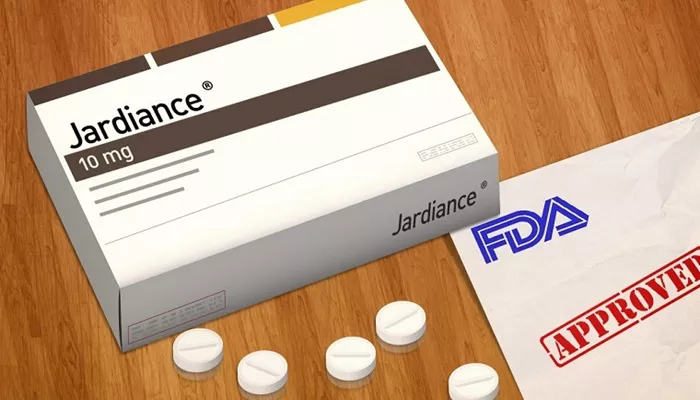Heart failure is a complex and chronic condition that affects millions of individuals worldwide. It occurs when the heart cannot pump blood effectively, leading to insufficient oxygen and nutrients reaching vital organs. This results in symptoms such as fatigue, shortness of breath, and fluid retention. The management of heart failure has evolved significantly over the years, with new treatments emerging to improve patient outcomes. One such treatment is Jardiance (empagliflozin), a sodium-glucose cotransporter 2 (SGLT2) inhibitor that has shown remarkable potential in treating heart failure.
Jardiance And Its Mechanism of Action
Jardiance was initially developed as a medication for type 2 diabetes, aimed at lowering blood glucose levels by preventing glucose reabsorption in the kidneys. However, its benefits extend beyond glycemic control. Recent studies have revealed that Jardiance can significantly improve outcomes for patients with heart failure, regardless of their ejection fraction.
How Jardiance Works
The primary mechanism of Jardiance involves inhibiting SGLT2 in the kidneys, which leads to increased glucose excretion in urine. This action also promotes natriuresis (excretion of sodium), which reduces fluid overload—a common issue in heart failure patients. By decreasing both preload and afterload on the heart, Jardiance alleviates some of the burden on cardiac function.
Reasons for Using Jardiance in Heart Failure Treatment
Reduction in Hospitalizations
Clinical trials, including the EMPEROR-Preserved and EMPEROR-Reduced studies, have demonstrated that Jardiance significantly reduces the risk of hospitalization due to heart failure. In these studies, patients treated with Jardiance experienced a 21% reduction in hospitalizations compared to those receiving placebo.
SEE ALSO: Why Is Pletal Contraindicated in Heart Failure?
Improvement in Cardiovascular Outcomes
Jardiance is the first heart failure therapy to show a statistically significant reduction in cardiovascular death rates among patients with heart failure. The EMPEROR trials indicated that patients taking Jardiance had a lower risk of cardiovascular death or hospitalization for heart failure.
Benefits Across Ejection Fraction Spectrum
One of the groundbreaking aspects of Jardiance is its efficacy across different types of heart failure, including those with reduced ejection fraction (HFrEF) and preserved ejection fraction (HFpEF). This broad applicability makes it a versatile option for many patients.
Improvement in Quality of Life
Patients using Jardiance have reported improvements in quality of life metrics, including exercise tolerance and overall well-being. The medication’s ability to manage symptoms effectively contributes to enhanced daily functioning and life satisfaction.
Adjunct Therapy to Standard Treatments
Jardiance can be used alongside other standard treatments for heart failure, such as ACE inhibitors or beta-blockers. This combination approach allows for more comprehensive management of the condition.
Renal Protection
Beyond its cardiovascular benefits, Jardiance has been associated with renal protective effects. It helps preserve kidney function in patients with heart failure, which is crucial since kidney health often deteriorates alongside heart function.
Minimal Side Effects
The safety profile of Jardiance is generally favorable, with the most common side effects being urinary tract infections and genital mycotic infections. These side effects are manageable and do not outweigh the significant benefits provided by the medication.
Long-Term Benefits
The long-term use of Jardiance has shown sustained benefits in reducing adverse cardiovascular events over time. This makes it an attractive option for chronic management of heart failure.
FDA Approval And Clinical Guidelines
The FDA’s approval of Jardiance for treating heart failure marks a significant advancement in cardiovascular medicine, especially for patients with HFpEF—an area previously lacking effective treatments. Current clinical guidelines recommend SGLT2 inhibitors like Jardiance as part of standard care for eligible heart failure patients.
Ongoing Research
Continuous research into Jardiance’s mechanisms and effects is underway, promising further insights into its role in treating not only heart failure but also other cardiovascular conditions.
Conclusion
Jardiance represents a significant advancement in the treatment landscape for heart failure patients. Its unique mechanism of action not only addresses glycemic control but also provides substantial cardiovascular benefits, making it a vital tool in managing this chronic condition. With its ability to reduce hospitalizations, improve quality of life, and offer protection against renal decline, Jardiance stands out as a revolutionary therapy that meets an urgent need in cardiovascular care.
As research continues to unfold regarding its long-term effects and potential applications beyond heart failure, Jardiance offers hope to millions living with this challenging condition—transforming lives through innovative medical advancements.
In summary, the integration of Jardiance into treatment regimens reflects a paradigm shift towards more effective management strategies for heart failure patients across various ejection fractions, ultimately enhancing their quality of life and health outcomes.
Related topics:
- Why Do You Get Pink Frothy Sputum in Heart Failure?
- Why Does Heart Failure Cause Sweating?
- Why Is Dopamine Given for Heart Failure?

